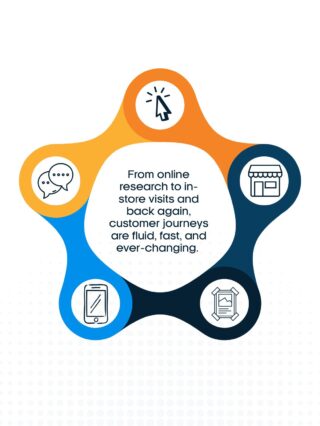If there’s one thing we learned at Opticon this month, it’s that SEO isn’t dead, it’s evolving. Instead of optimizing for one audience (Google), you now need to optimize for multiple engines. Generative Engine Optimization (GEO) has emerged as an extension of SEO by expanding the practice of tailoring content beyond search engines to include generative AI systems. Large language models are quickly becoming the “new engines” people use to find answers, and if your content isn’t structured clearly enough for them to parse, you risk being excluded.
The same SEO fundamentals that boost visibility in search also increase the likelihood your site is accurately represented in AI Overviews and by large language models like ChatGPT, AI Mode, and Claude. In this landscape, content must serve users while remaining structured and clear enough for AI systems to parse, summarize, and distribute. Because these models rely on how search engines index and interpret content, maintaining strong SEO fundamentals is essential to staying visible.
If you want to keep up with AI and the evolving search category, the next step is applying these principles in practice by focusing on simple, actionable tactics that make your content easier for both search engines and AI systems to recognize and elevate. Here’s what to consider:
Site structure matters. From headers to schema, good site structure is a simple but too often overlooked way to make sure the crawlers can understand your site. If the crawlers can accurately interpret your site, so can the LLMs.
Answer user questions. User queries vary significantly between search engines and LLMs, not just in length but in style. In the U.S., the average search query is 3.4 words, while LLM queries average 80 words and are far more conversational and specific. The takeaway isn’t to default to FAQ-style content, but to ensure your material is complete, concise, and directly answers user questions without unnecessary fluff.
Tout your credibility. In AI-driven search, authority signals carry even more weight because large language models prioritize trustworthy, verifiable sources when generating answers. If your content clearly demonstrates expertise—through accurate data, cited references, thought leadership, and consistent brand voice—it is more likely to be surfaced, summarized, and shared by AI systems. Establishing credibility not only improves visibility but also builds user trust when your content appears in AI-generated results.
Prioritize quality over quantity. Publishing fewer, higher-value pieces helps your brand stay agile and move fast as AI systems evolve. Quality content is easier for search engines and AI models to parse, more likely to appear in summaries, and more resilient to algorithm shifts. By emphasizing depth and clarity, and updating existing content through historical optimization, you reduce rework and keep pace with the fast-changing AI landscape.
AI is transforming how information is found and shared, but it hasn’t changed the fundamentals. Success still comes down to creating clear, credible content that delivers a great user experience. Now, that content must also be structured for both search engines and AI systems. By combining timeless SEO principles with forward-looking practices like GEO, you position your brand to stay visible, trusted, and competitive in a rapidly evolving landscape.
Contributors: Candace Kassman




